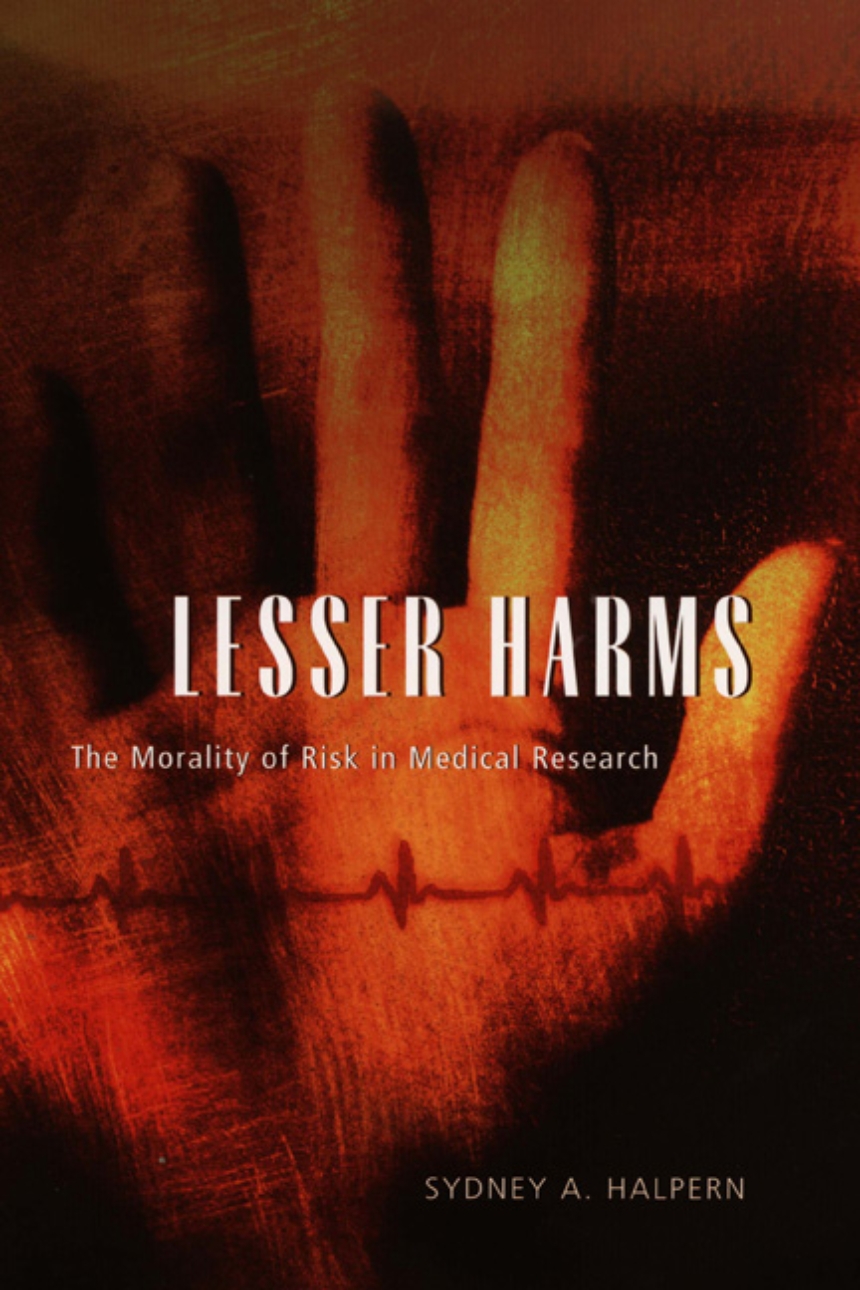Lesser Harms
The Morality of Risk in Medical Research
Research physicians face intractable dilemmas when they consider introducing new medical procedures. Innovations carry the promise of preventing or curing life-threatening diseases, but they can also lead to injury or even death. How have clinical scientists made high-stakes decisions about undertaking human tests of new medical treatments? In Lesser Harms, Sydney Halpern explores this issue as she examines vaccine trials in America during the early and mid-twentieth century.
Today’s scientists follow federal guidelines for research on human subjects developed during the 1960s and 1970s. But long before these government regulations, medical investigators observed informal rules when conducting human research. They insisted that the dangers of natural disease should outweigh the risks of a medical intervention, and they struggled to accurately assess the relative hazards. Halpern explores this logic of risk in immunization controversies extending as far back as the eighteenth century. Then, focusing on the period between 1930 and 1960, she shows how research physicians and their sponsors debated the moral quandaries involved in moving vaccine use from the laboratory to the clinic.
This probing work vividly describes the efforts of clinical investigators to balance the benefits and dangers of untested vaccines, to respond to popular sentiment about medical hazards, and to strategically present risk laden research to sponsors and the public.
Today’s scientists follow federal guidelines for research on human subjects developed during the 1960s and 1970s. But long before these government regulations, medical investigators observed informal rules when conducting human research. They insisted that the dangers of natural disease should outweigh the risks of a medical intervention, and they struggled to accurately assess the relative hazards. Halpern explores this logic of risk in immunization controversies extending as far back as the eighteenth century. Then, focusing on the period between 1930 and 1960, she shows how research physicians and their sponsors debated the moral quandaries involved in moving vaccine use from the laboratory to the clinic.
This probing work vividly describes the efforts of clinical investigators to balance the benefits and dangers of untested vaccines, to respond to popular sentiment about medical hazards, and to strategically present risk laden research to sponsors and the public.
“Concise and extremely well-written. . . . A fascinating synthesis of sociology, history, and institutional theory.”—Samuel C. Blackman, Journal of the American Medical Association
246 pages | 2 tables | 6 x 9 | © 2004
Sociology: General Sociology, Medical Sociology, Occupations, Professions, Work, Social History
Reviews
Table of Contents
Acknowledgments
List of Abbreviations
Introduction
1. The Origins of a Moral Logic of Risk
2. Negotiating Moral Boundaries: The Polio Vaccines of 1934-1935
3. Research Sponsors and the Culture of Risk
4. Formalizing Responses to Research Hazards
5. The Social Nature of Moral Action
6. Moral Traditions in an Era of Government Oversight
Notes
Selected Bibliography
Index
List of Abbreviations
Introduction
1. The Origins of a Moral Logic of Risk
2. Negotiating Moral Boundaries: The Polio Vaccines of 1934-1935
3. Research Sponsors and the Culture of Risk
4. Formalizing Responses to Research Hazards
5. The Social Nature of Moral Action
6. Moral Traditions in an Era of Government Oversight
Notes
Selected Bibliography
Index
